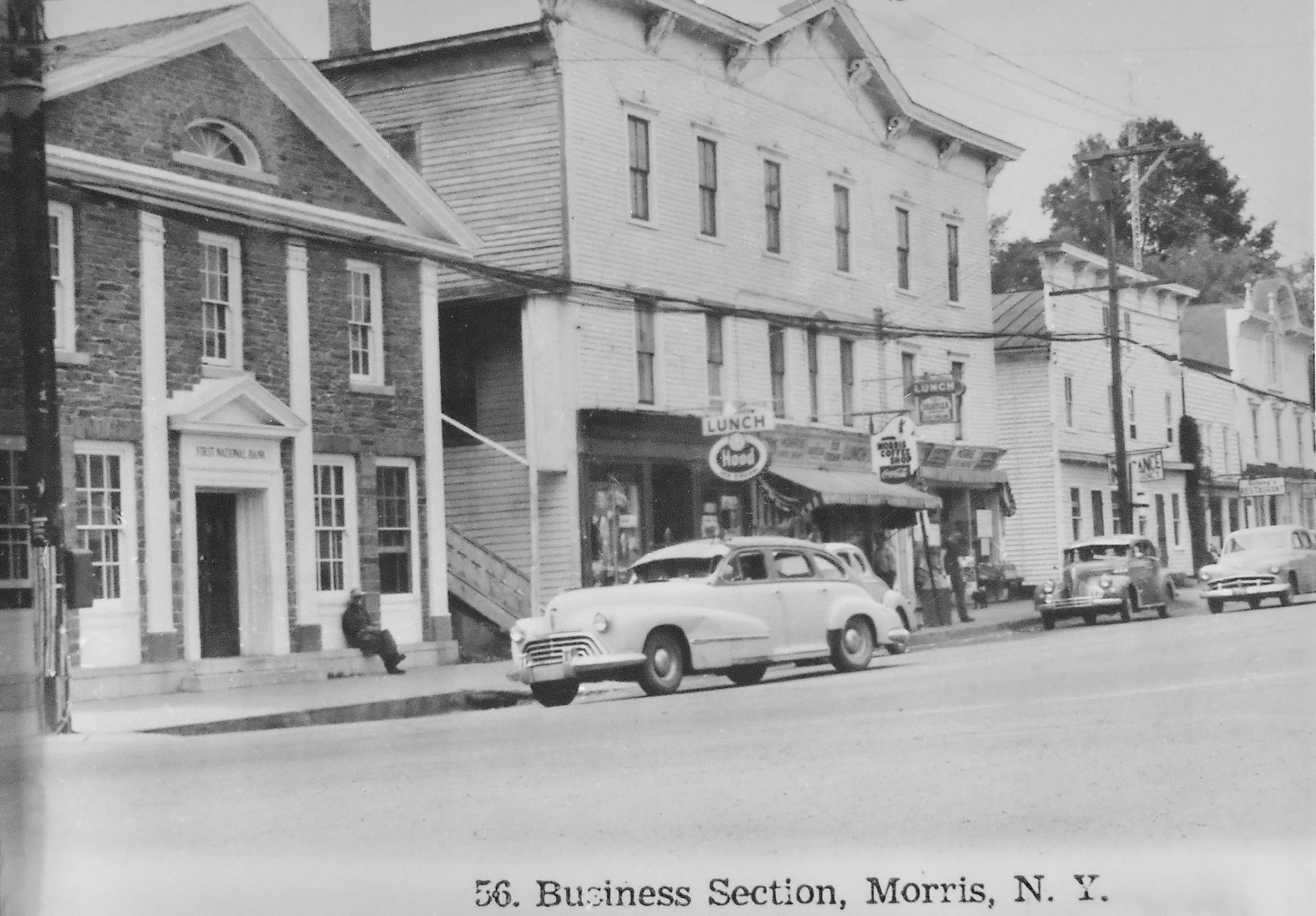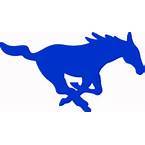
You are here
Postcard 56. Business Section, Morris, N. Y., from the late 1940s - West Main St.
Rene Elliott shared this great postcard on FaceBook and some interesting comments were made.
Rene wrote:
My father dates these cars at 1947 - 1949 Olds, Nash, Plymouth? No idea if that is Stewart Lawrence in front of the bank, my father said after school and towards evening the local young hooligans would sit on the ledge in front of the bank and roll cherry bombs under cars turning the corner, (when they weren't sneaking across the street and placing them under the potted tomato plants Gages had out on the porch). Note the antenna tower behind the arts and crafts center, was that connected with Quintin's TV and radio shop in the far side of the Arts & Crafts building?
Comments
Leona Shelley
I'd forgotten Butler Quintin's TV/Radio shop.
Ken Bain
Me too, but remember him being at our house fixing a TV
Cynthia Dragulski
He was the one everyone called
Leona Shelley
I always called George Holden in G-ville.
Ken Bain
quite different today
Susan Davis-Shisler
We bought all of our televisions from him..... after this building I believe he moved up next to what was the "Victory" that is where I remember him being
Judy Knapp Reed
This is what Morris looked like when my family moved here in 1945. Does anyone remember the grocery store that Merle Eustice used to run? It was in the first group of shops after the bank. I remember going there with my mom.
Linda Emhof
What a great picture! Those boys would be in jail these days for the cherry bombs????
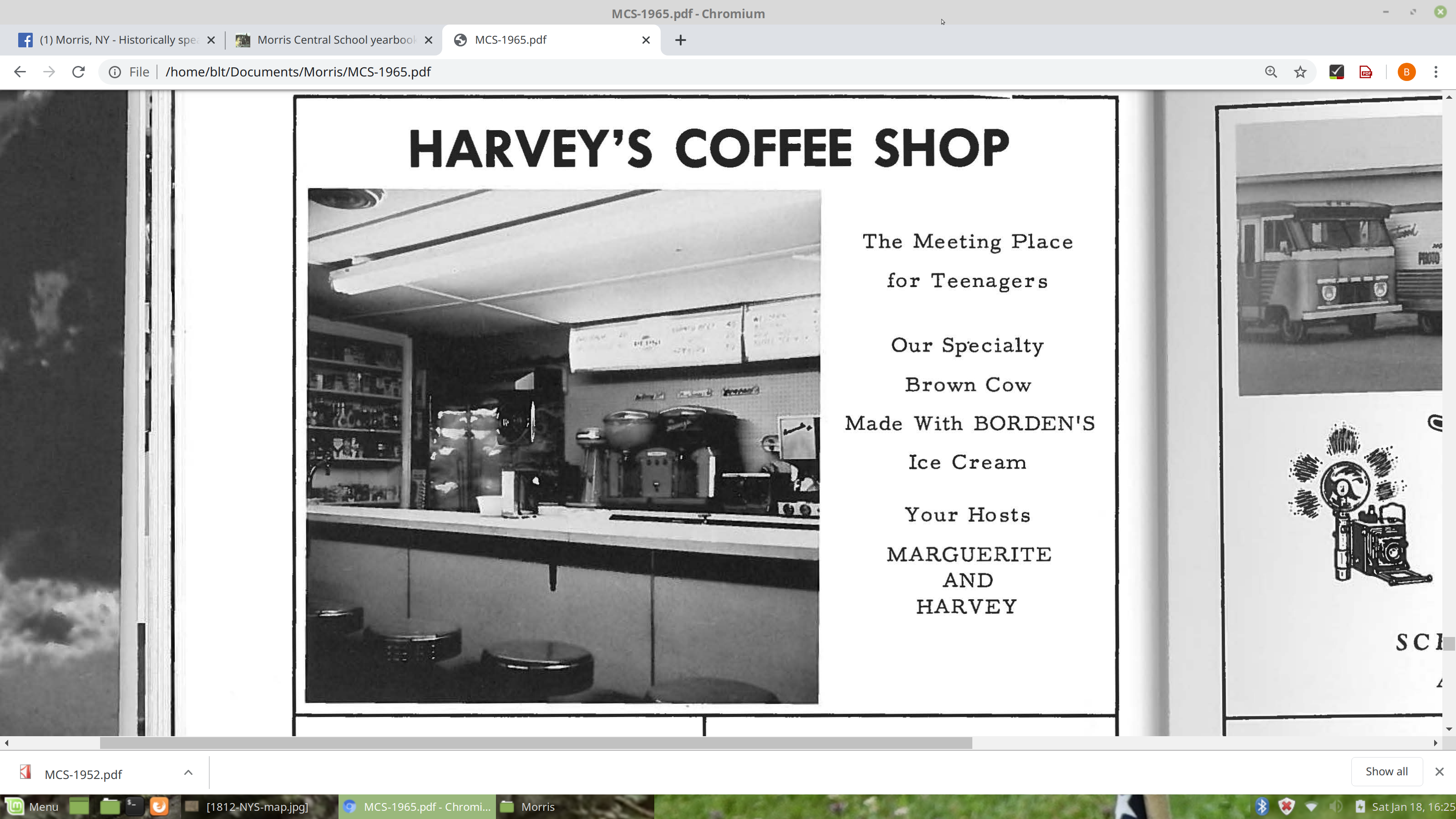
The photo above is from the 1965 Morrisanian, the yearbook of the Morris Central School.
Susan Davis-Shisler
I do remember that large building next to the bank from when I was little, but I don't remember the businesses in it..... in this picture looks like grocery, lunch, deli type establishments. I vaguely remember it being torn down and the phone company building put in.... but couldn't say when..... Harvey's Coffee Shop (then Don's, then Stone's) was the "small" building to the right the whole time I grew up.
Bob Thomas
In the postcard above the coffee shop has DeLong's Restaurant on the sign.
Susan Davis-Shisler
I wonder sometimes why so many of us.... me included.... couldn't wait to leave.... as Jesse Jacobsen so eloquently put it "this quaint little village a little diamond in the rough" I know I love visiting every summer and appreciate growing up there so much.....
Janet Washbon
The large building next to the bank is where Jeremiah Cruttenden's tavern and inn stood in the early to mid-1800s. It looks a bit like the version the A.S. Avery included in his painting of the Four Corners in 1820s that is in the Souvenir of Morris booklet that was reprinted for the American Bicentennial in 1776, I think by the Morris Historical Society. Does anyone know if this is the original building or if it was a replacement. I can remember when this building was torn down for the phone company building..
Rennie M Elliott
James E. Cooke had the tavern rebuilt 1883 and the theatre/ballroom added upstairs, about the end of a building boom in Morris for a few decades when the Otsego Silver Mining Co. failed, the Moore & Co. bank invested in silver failed, the textile mills failed, and then the big Sept. 1883 fire. No railroad, cheese making was next biggest thing in the 1890s when silos allowed for better dairy production. J.P. Kenyon even offered free use of his shops on Grove St. (see 1902 flood picture below) for a year in 1895 just to get someone to start a business here and create jobs, and that only took two decades, although at some point someone did make roller skate wheels in the machine shop prior to Linn coming along and renting it. they actually had a roller skating rink upstairs in the building with a stairway on the end next to the hillside.
So people with machining/blacksmith/carpentry skills were leaving Morris for Oneonta D&HRR shops, or Hartwick when the trolley that was prevented from running through this valley was built over there. But at least by then railroads in neighboring valleys was making buying feed and shipping cheese out a little more profitable. Improved highways were seen as the answer, and in time that made commuting longer distances and Morris becoming a "bedroom" community feasible, the problem is increasing transportation costs particularly in NY compared to other states, and less and less agriculture and related jobs locally, plus the challenge of steep grades east and west of Morris, are a handicap the community has lived with over a century now. Pretty much in the 1850s it's why my ancestors left Scotland hoping to live and work someplace they could eventually own their own farms and raise a family without being tenants all their lives. And pretty much the situation is now, future generations realistically need to either get a good government job, win the lottery, or move to another state with decent job opportunities.
I have talked my own relatives out of staying here for their own good. That stinks really, but it's the best advice I can give a younger person. Nothing survives here for a business without the blessings, tax exemptions or grants of the government. I hope to be proven wrong about all of this, because despite all the negatives I still consider it to be the best place to live, if you could earn a living here. Instead of just "survive" day to day. Anyways, I believe it was 1967 when they took down the Cruttenden tavern/Cooke block (also called "Kenyon" and "Wellman" or even "Perry" block? over the decades) to build the brick telephone building on Main St.
Janet Washbon
Thanks for the history.
Rennie M Elliott
"ReClaim NY" and "Freedom in the Fifty States" pages spell out the logical reasons for leaving NY, the problem is it will always be "home", whoever or whatever you want to say caused it to get so expensive, the question remains if it can be turned around. Or at least if the income opportunities equalled the ever increasing taxes, it would be logical, not sentimental, to stay.
Susan Davis-Shisler
Yep Rennie..... this is so true as to why many had to leave, but honestly, I just wanted to go... didn't think about economics.
Gary Fisher
The Plymouth and Dodge cars made just after the war were often called overturned bath tubs. My mother had a pea green Dodge in the mid 50's. with fluid drive but still had a clutch as I recall.
Ken Bain
Citroen was the true upside down bath tub
Rennie M Elliott
My family had 2Cv, 4CV and a Dauphine Renaults, the VW was a superior vehicle.
Ken Bain
I'm not much of an european car fan, I'm sure they're good, harder to work on, parts are expensive etc.
Carol Martini
I love these posts, Rennie. Please keep them coming.
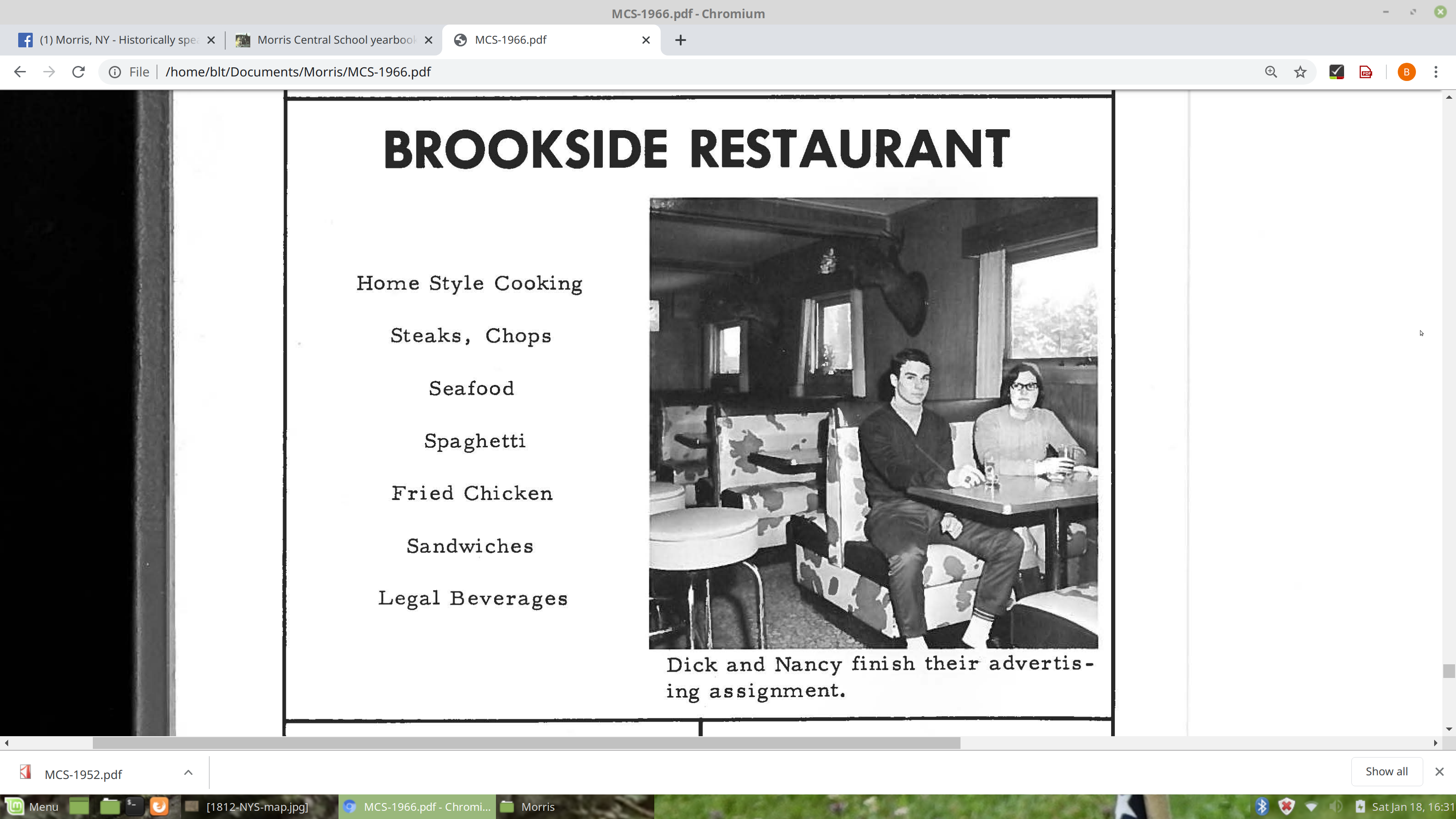
Just a bit further west on Main St is the Brookside. This photo is from the 1966 Morris Central School Morrisanian yearbook. Dick Ryther, a high school junior at the time, and Nancy Payton, a senior are in the photo.
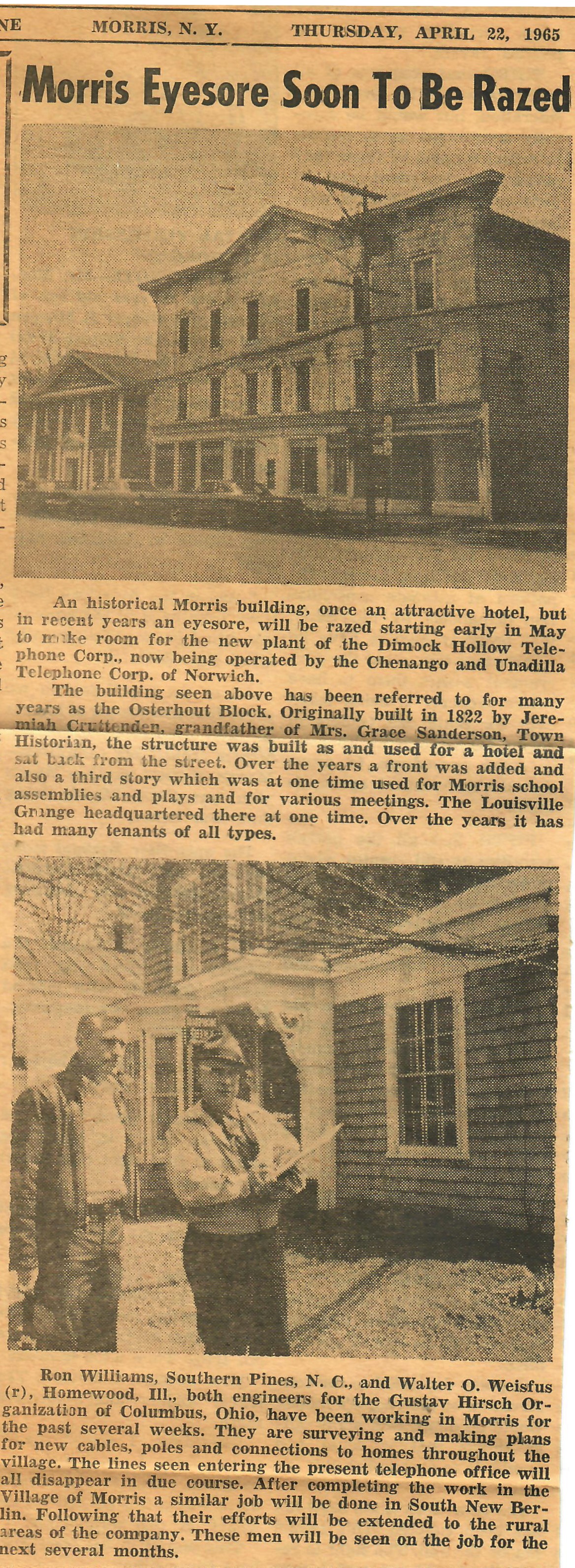
From The Morris Chronicle VOLUME ONE HUNDRED ONE THURSDAY APRIL 22, 1965
An historical Morris building, once an attractive hotel, but in recent years an eyesore, will be razed starting early in May to make room for the new plant of the Dimock Hollow Telephone Corp., now being operated by the Chenango and Unadilla Telephone Corp. of Norwich.
The building seen above has been referred to for many years as the Osterhout Block, Originally built in 1822 by Jeremiah Cruttenden, grandfather of Mrs. Grace Sanderson, Town Historian, the structure was built as and used for a hotel and sat back from the street. Over the years a front was added and also a third story which was at one time used for Morris school assemblies and plays and for various meetings. The Louisville Gnange headquartered there at one time. Over the years it has had many tenants of all types.
Ron Williams, Southern Pines, N. C., and Walter O. Weisfus (r), Homewood, Ill., both engineers for the Gustav Hirsch Organization of Columbus, Ohio, have been working in Morris for the past several weeks. They are surveying and making plans for new cables, poles and connections to homes throughout the village. The lines seen entering the present telephone office will all disappear in due course. After completing the work in the Village of Morris a similar job will be done in South New Berlin. Following that their efforts will be extended to the rural areas of the company. These men will be seen on the job for the next several months.
| Attachment | Size |
|---|---|
| 315.75 KB | |
| 1.75 MB | |
| 1.31 MB | |
| 1.52 MB | |
| 1.89 MB | |
| 52.61 KB |

